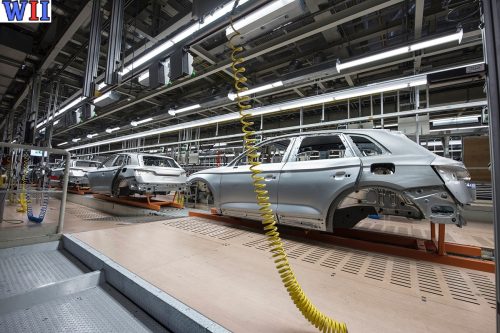Automakers : Wall Street closed the month positively as the S&P 500 saw a 0.1% increase, rising 6.73 points to 4,588.96. This marked the index’s sixth consecutive monthly gain, establishing the longest winning streak in over two years. Investors are seeking signs of reduced inflation to avoid a forecasted recession.
The Dow Jones Industrial Average also performed well, rising by 0.3% or 100.24 points to 35,559.53. Meanwhile, the Nasdaq composite saw a modest increase of 0.2% or 29.37 points, closing at 13,346.02.
Despite the positive outlook, some economists caution that Wall Street may be too quick in predicting a smooth landing. Upcoming data could challenge the premise that inflation has decreased enough for the Federal Reserve to halt interest rate hikes and lower them next year.
The rise in interest rates can adversely impact the economy, decreasing stock and asset values. The Federal Reserve raised its primary rate to its highest level in nearly 20 years, a significant shift from its virtually zero rates just a year earlier. However, many shoppers believe that prices will stay the same.Market leaders, such as Rob Arnott from Research Affiliates, advise against premature celebration, stating that prices may rise again later this year despite the recent slowdown.
The upcoming US employment market data, scheduled to be released on Friday, will be crucial, according to Federal Reserve Chairman Jerome H. Powell. Significant growth will be necessary to avoid a recession, but a high figure may indicate rising inflation, potentially prompting the Federal Reserve to raise interest rates faster.
Read More: Gia Biagi : Departs as Chicago DOT Commissioner after Four-Year Tenure
Attention is also on two major Wall Street stocks, Amazon and Apple, as they prepare to report spring earnings on Thursday. These two stocks substantially impact the S&P 500 and other markets due to their size and influence. Amazon and Apple have experienced significant growth this year, driven by expectations of continued expansion. They must maintain their momentum to meet the high market expectations, as they have already climbed over 50% this year.
During the current earnings season, more firms have outperformed profit forecasts, signaling optimism among corporations about their future performance and economic prospects. ON Semiconductor saw one of the most significant increases in the S&P 500 at 2.5% after reporting higher-than-expected quarterly profits. However, Tempur-Sealy International faced challenges as a security problem led to the shutdown of several IT systems, causing a 3% drop in stock prices.
Outside of Europe, stock markets received a boost from reports of Europe’s economic growth, which has been stagnant. Hong Kong and Shanghai’s stock markets also climbed as investors expressed hope that Beijing will take measures to stimulate the Chinese economy.Additionally, a study showing a slowdown in Chicago’s industry, slower than initially anticipated, resulted in a decline in US Treasury bond rates. However, the impact of higher interest rates tends to take longer to affect the manufacturing sector compared to other industries. The 10-year Treasury note interest rate fell from 3.96% on Friday night to 3.95% on Monday. Price wars for electric cars may not extend to gas-powered or hybrid vehicles, as prices have remained stable despite rising auto loan interest rates.
The recent interest rate increase by the Federal Reserve has yet to affect car demand. During the outbreak, parts were lacking, causing problems. Analysts hope the sector will balance supply and demand.
New car prices increased by nearly 20% in the past three years, reaching $48,000+. Since 2020, automakers set their prices, causing the average cost of new cars to rise. Interest rates have sustained this pricing situation due to their relatively low levels.
Despite high prices, buyers often face a “compromise market” in stores. Some opt for buying slightly used cars or reducing fleet purchases when low on funds. These factors maintain high used car prices. This is important because higher interest rates increase monthly bills.Manufacturers are cautious about pricing to test customer limits. The situation has improved despite part shortages in the auto industry during the pandemic. However, there is a need for more rail cars nationwide, making shipping more difficult.
Early predictions anticipated a “price war,” but automakers have not reduced prices, and stocks remain below historical levels. Still, there is high demand, possibly indicating that individuals who delayed car purchases due to the epidemic are now prepared to buy.Little is expected to change soon regarding car affordability, which is unfortunate for customers. Automakers may back interest rates to address the issue. Buyers should consider trade-ins to offset costs. The average trade-in value is $23,000, a significant increase from 2020.
As summer car-buying season nears, people must carefully consider their needs and desires. This is because upgrades can cost more than expected. When buying a car, you must carefully consider and explore various options.


